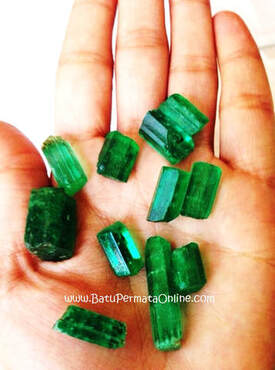Beautiful Colombian Emerald
Emerald is a gemstone that is green to dark green. Emeralds include beryl silicate minerals (containing beryllium) and the green color is caused by chromium trace (Be3Al2SiO6). The presence of vanadium and iron that accompany chromium trace will cause a variety of zones in the green color. Although other gemstone mines can produce high-quality emeralds, Colombian mines are among the most highly respected by high fashion jewelry collectors around the world.
Colombian emeralds command the highest prices – sometimes $100,000 a carat or more depending on size and color – while recent emerald discoveries in Ethiopia and Brazil are also seeing high prices. For instance, Colombian stones are considered the purest emeralds in the world because the variety mined in Colombia are found in sedimentary host rock and not Igneous rock where most emeralds are found.
Colombian emeralds command the highest prices – sometimes $100,000 a carat or more depending on size and color – while recent emerald discoveries in Ethiopia and Brazil are also seeing high prices. For instance, Colombian stones are considered the purest emeralds in the world because the variety mined in Colombia are found in sedimentary host rock and not Igneous rock where most emeralds are found.
Emerald hardness is high (7.5 from a scale of 10 Mohr). The best emerald comes from Colombia, because the green color of emeralds is very sharp, even towards dark green and crystals. Different if Emerald from Brazil or Russia has a lighter green color. Emerald symbolizes elegance, coolness & authority for the wearer.
For more than 5000 years, emerald has become one of the most desirable and valuable colored gemstones. Ancient civilizations in Africa, Asia, and South America independently discovered emeralds and made them their highest gemstones.
For more than 5000 years, emerald has become one of the most desirable and valuable colored gemstones. Ancient civilizations in Africa, Asia, and South America independently discovered emeralds and made them their highest gemstones.
|
Today Emerald, together with Ruby and Sapphire, forms "big three" of colored stones. "Big Three" produces more economic activity than all other colored stones combined. In 2011 the value of Emerald imported to the United States exceeded the combined Rubies and Sapphire values. The emerald value of imports also exceeds the value of all colored stones outside the combined "big three".
While emeralds in antiquity were mined in Egypt, India and Austria, the best and most famous emeralds are found in two renowned mines in Colombia — today, the world's largest provider of emeralds, responsible for more than 60% of world production. Other major suppliers include Brazil, Zambia and Zimbabwe Emeralds are rarer and often more expensive than diamonds When it comes to rare and expensive gemstones, most of us immediately think of diamonds, but, in fact, emeralds are more than 20 times rarer than diamonds and, therefore, often command a higher price. |
Emerald appearance is sometimes associated with its mine location. Colombian emeralds are said to have a warmer and more intense pure green color. Zambian emeralds are said to have a cooler, more bluish green color. In spite of these theories, the truth is that emerald appearance overlaps between sources.




